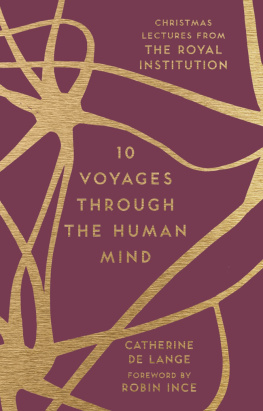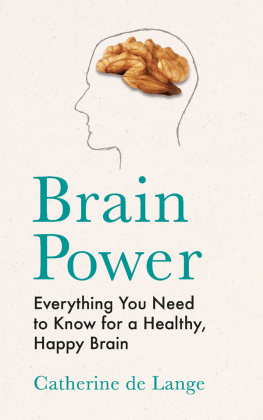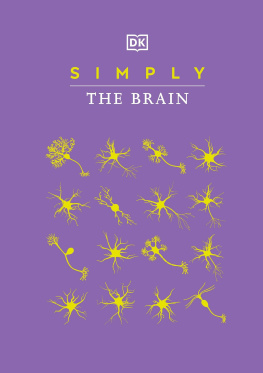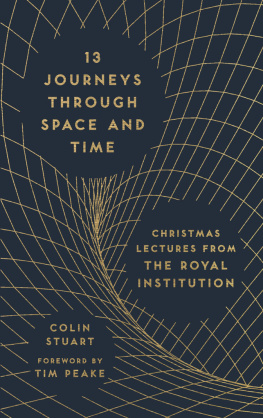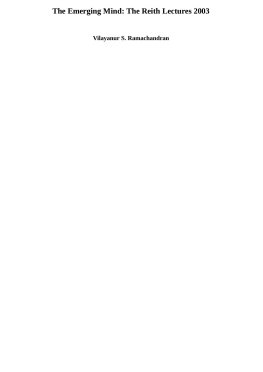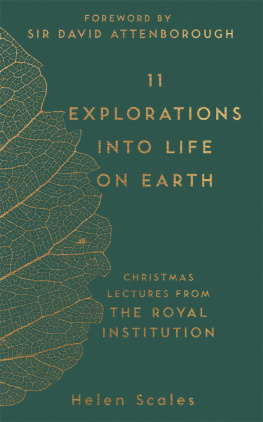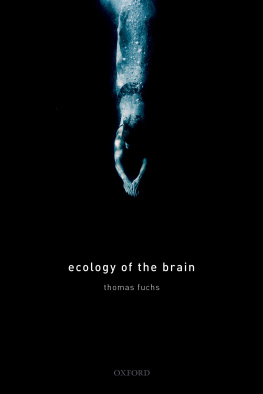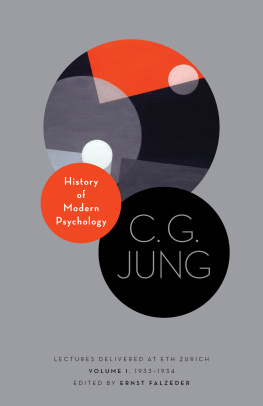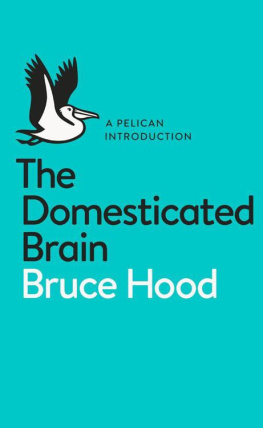10
VOYAGES
THROUGH THE
HUMAN MIND
Also in the Christmas Lectures series
13 Journeys Through Space and Time
11 Explorations into Life on Earth
First published in Great Britain in 2019
by Michael OMara Books Limited
9 Lion Yard
Tremadoc Road
London SW4 7NQ
Copyright Michael OMara Books Limited 2019
Every reasonable effort has been made to acknowledge all copyright holders. Any errors or omissions that may have occurred are inadvertent, and anyone with any copyright queries is invited to write to the publisher, so that a full acknowledgement may be included in subsequent editions of this work.
All rights reserved. You may not copy, store, distribute, transmit, reproduce or otherwise make available this publication (or any part of it) in any form, or by any means (electronic, digital, optical, mechanical, photocopying, recording or otherwise), without the prior written permission of the publisher. Any person who does any unauthorized act in relation to this publication may be liable to criminal prosecution and civil claims for damages.
A CIP catalogue record for this book is available from the British Library.
ISBN: 978-1-78929-097-4 in hardback print format
ISBN: 978-1-78929-129-4 in ebook format
www.mombooks.com
Follow us on Twitter @OMaraBooks
Typeset by Ed Pickford
Cover design: Anna Morrison
Endpapers: drawings by neuroscientist Santiago Ramn y Cajal from The Retina of the Vertebrates, published in 1894
CONTENTS
A. V. Hill, 1926
Hamilton Hartridge, 1946
Sir Frederic Bartlett, 1948
Richard L. Gregory, 1967
Heinz Wolff, 1975
Sir Colin Blakemore, 1982
Baroness Susan Greenfield, 1994
Kevin Warwick, 2000
Bruce Hood, 2011
Sophie Scott, 2017
by Robin Ince
I was eating an egg and cress sandwich in the company of two acrobats, a neuroscientist and a raven. The acrobats and neuroscientist were new to me, but I had met the raven before. His name was Brann and he once outstared Professor Brian Cox while showing off the shimmer of his black feathers, as if goading Brians tamer locks. I was backstage at the Royal Institution and about to take part in one of its Christmas Lectures. I was there to be silenced for the purposes of science.
I was the perfect subject for a demonstration for the 2017 Christmas Lectures by Professor Sophie Scott. It can be hard to shut me up. I am overly verbose and nervously chatty, especially when in front of an audience. I seldom volunteer for silence.
Sophie had telephoned me a few months before to ask if I was willing to have a magnetic pulse to the left-hand side of my brain, which would briefly disable the motor region in charge of my vocalizing. She felt that if she could stop me talking then it would prove you could stop anyone talking. I volunteered immediately without the slightest glance at the health and safety form. I trust neuroscientists which, looking at some of the more lurid and haphazard experiments of the twentieth century, may not be entirely advisable.
A few weeks later, after taking part in some trial magnetic pulses in the lab, I sat in front of 400 young people in the Royal Institutions Lecture Theatre and recited Lewis Carrolls Jabberwocky. Somewhere between gyre and gimble and mome raths outgrabe I felt a sensation like a low voltage spark hitting my scalp, and the words I was about to say seemed to get stuck in my throat. It felt as though my brain glitched briefly, before starting up again. During each trial run, I found the words got stuck in different ways sometimes I could feel them waiting to exit, other times they vanished in a haze, but each time only for a moment. Each slight change in positioning of the pulse changed the experience of losing the ability to speak.
Afterwards, some people suggested I should have felt worry or fear in those moments, but my fascination with the brain and the jiggery-pokery that can mess with it usurped my anxiety. It was a fascinating insight into the fragility of the brain and a window, though obviously only a very small one, into imagining the experience of those I have known who have suffered a stroke.
I have been fortunate to take part in a variety of psychological and neuroscientific experiments by dint of being the co-host of The Infinite Monkey Cage series on BBC Radio 4. If anyone approaches me on a late-night train and asks if I would be interested in partaking in a scientific experiment, I more often than not say yes. This is how I found myself at the Royal Hospital for Neuro-disability, having an EEG (electroencephalogram) that gave me some sense of how my brain reacted to the music of the Lighthouse Family. It is why I agreed to an fMRI (functional magnetic resonance imaging) and had my brain scanned as I played a solo game of Just a Minute, so researchers could see if anything of interest goes on inside a performers brain when they are improvising nonsense. It is a remarkable thing to observe the brain where the youness of you resides.
We are told that the human brain is the most complex thing in the known universe, so it is no surprise that some of the answers to why we are as we are a self-conscious creature, able to contemplate our reflection and experience the anxiety that goes with awareness, as well as the joys are not yet forthcoming. The twentieth century is mired with ambitious experiments that were meant to solve individual cognitive issues, but which often made the patient worse or dead. As the knowledge of the hardware inside our brains has progressed, our understanding of why we are the way we are is gaining colour and context. There is much hot debate between neuroscientists and in the heat, some of the flames illuminate us while turning other ideas to ash. If we are to survive as a species, we must find ways to understand ourselves better, to comprehend our decision-making, our will, to know why our brains and minds behave as they do.
I am fascinated by the universe; why atoms behave as they do, what happens at the event horizon of black holes, whether there are many universes. But most of all, I am fascinated by our insatiable curiosity as a species and why we have a brain that has a potential that goes so far beyond survival simply for survivals sake. And that is why Im glad you have picked up this book, which illuminates through these Lectures how our understanding of ourselves has developed, and gently interrogates our brains and our minds.
Ill shut up now before the magnetic pulse is needed to stop my words.

If a Christmas shopper were to stray off the busy streets of Londons Mayfair on a December day, they might well stumble upon a very different kind of festive preparation. With the grand pillars of the Royal Institution building at 21 Albemarle Street partially obscured by huge green broadcasting trucks, they would likely find a camera crew dragging their kit and cables among a flurry of activity, all sorts of props and machinery being delivered, and perhaps a queue of young people waiting to get in. Time it right, they might even spot an exotic animal or two.
Similar final preparations for the Royal Institution Christmas Lectures have been happening here for almost two hundred years (except for a short break during the Second World War). They were dreamed up by Michael Faraday in 1825 at a time when there was scant provision for scientific education at school, and to this day an eminent scientist steps out each year with the mission to enthuse and thrill a bright young audience (many a Lecturer was themselves drawn into science after sitting among the audience as a child). Each series of Lectures is traditionally packed with demonstrations, explosions and unlikely guests and has, since 1966, been regularly broadcast on television. They are also now available for all to watch online, and when the London show is wrapped up, they travel to many locations around the world, reaching hundreds of thousands of people.

